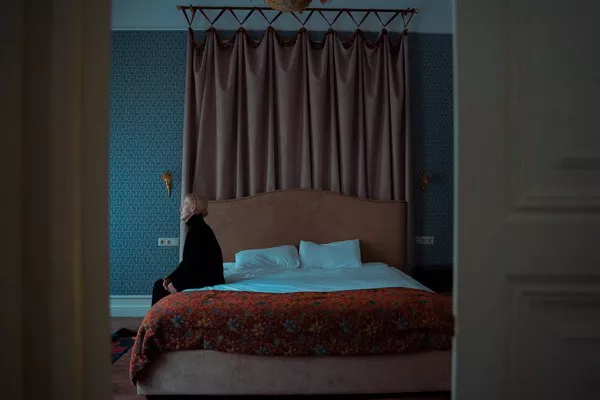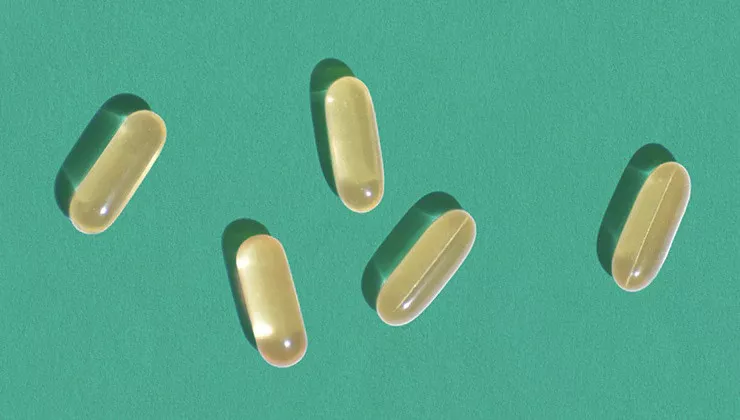In the ever-evolving world of beauty tech, the LED face mask has emerged as one of the most talked-about tools in skincare. With its futuristic design and promises of clearer, brighter, and younger-looking skin, this glowing device is more than just a trend—it’s a revolution. Originally developed for medical use, LED (light-emitting diode) therapy has been used for decades to accelerate wound healing and reduce inflammation. Today, that same technology has found a place in home skincare routines, offering professional-level treatments without the need for a clinic visit.
What makes LED face masks so fascinating is their ability to address multiple skin concerns with a non-invasive approach. Depending on the color of light used—red, blue, green, and others—these masks can target fine lines, acne, dark spots, and even skin sensitivity. Each wavelength penetrates the skin at different depths, stimulating cellular activity, increasing blood flow, and encouraging collagen production. The result? Healthier, more vibrant skin without needles, downtime, or discomfort.
How LED Light Therapy Works Beneath the Surface
LED therapy isn’t just about glowing lights on your face. It’s based on a scientific process known as photobiomodulation. This process uses specific wavelengths of light to trigger biochemical reactions in skin cells. These reactions stimulate healing, reduce inflammation, and energize the cells responsible for creating collagen and elastin. Because LED light doesn’t contain ultraviolet rays, it won’t damage your skin or cause burns. Instead, it promotes natural regeneration from the inside out.
Red light, for example, penetrates deeply to stimulate fibroblasts—cells that produce collagen and elastin, essential proteins that keep the skin firm and youthful. Blue light targets the surface, where it kills acne-causing bacteria and reduces inflammation. Other colors, such as green and yellow, are used to fade hyperpigmentation and reduce redness. Together, they form a well-rounded therapy suitable for nearly every skin type and concern. With regular use, the cumulative effects can lead to visible improvements in skin texture, clarity, and firmness.
Red Light vs. Blue Light: What’s the Difference?
Red and blue light are the most common types used in LED face masks, but their benefits are completely different. Red light, with its longer wavelength, penetrates deeper into the skin. It’s the go-to choice for anti-aging. It helps to reduce wrinkles, firm sagging skin, and improve overall texture. By stimulating blood circulation and collagen synthesis, red light rejuvenates the skin at a structural level, making it ideal for mature or damaged skin.
Blue light operates at a shorter wavelength and is primarily used to treat acne. It works by targeting the bacteria (Propionibacterium acnes) that live on the skin and contribute to breakouts. When this light interacts with the bacteria, it creates oxygen radicals that destroy them without harming the surrounding tissue. The result is fewer breakouts, reduced inflammation, and a calmer complexion. Some masks even offer purple light, which combines red and blue to deliver both anti-aging and acne-fighting benefits in a single session.
Are LED Face Masks Safe for Daily Use?
One of the biggest advantages of LED face masks is their safety profile. Unlike harsh chemical peels or laser treatments, LED therapy is gentle and non-invasive. It doesn’t burn, sting, or require recovery time. For most people, it’s completely safe to use several times a week—or even daily, depending on the device. However, as with any skincare tool, consistency and proper usage are key to seeing results.
Make sure to follow the manufacturer’s instructions carefully. Each mask is designed with a specific power output and recommended session time, usually ranging from 10 to 20 minutes. Overuse doesn’t necessarily lead to faster results and could potentially cause dryness or sensitivity in rare cases. For those with certain medical conditions or who are taking medications that increase photosensitivity, it’s always wise to consult with a dermatologist before starting LED therapy.
How to Incorporate an LED Face Mask Into Your Routine
Using an LED face mask may look intimidating at first, but it’s incredibly easy to fit into your skincare routine. Start by cleansing your face to remove any makeup, oil, or impurities. Dry your skin thoroughly, as most masks work best on a clean, dry surface. Place the mask securely on your face and turn it on according to the instructions. Sit back, relax, and let the light do its work. It’s the perfect excuse to unwind, listen to music, or enjoy a few minutes of meditation.
After the session, apply your serums and moisturizers. LED light preps the skin to better absorb active ingredients, making this the ideal time to layer on hydrating or anti-aging products. For optimal results, use the mask consistently—ideally three to five times per week. While results may vary, most users start to see noticeable changes after four to six weeks. Skin feels firmer, looks more even-toned, and becomes more resistant to daily stressors.
Who Should Use an LED Face Mask?
The beauty of LED face masks lies in their versatility. Whether you’re dealing with fine lines, persistent breakouts, uneven tone, or dullness, there’s likely a light treatment that can help. Teenagers struggling with acne can benefit from blue light therapy, while adults seeking firmer, smoother skin will find red light especially useful. Those dealing with post-acne scars or pigmentation issues might turn to green or yellow light options for added support.
Even individuals with sensitive or rosacea-prone skin can benefit, provided they use the mask with care. Because LED therapy doesn’t use heat or abrasion, it’s much gentler than other high-tech treatments. However, people with very sensitive skin should start with shorter sessions and observe how their skin responds. Pregnant women or those with epilepsy should consult with a medical professional before using an LED mask, just to be safe.
Do At-Home Devices Compare to Professional Treatments?
Professional LED treatments, often offered in dermatology clinics or medispas, typically use stronger wavelengths and more advanced equipment. These sessions may produce quicker results or be paired with other treatments for enhanced effects. However, at-home LED masks are designed for frequent, long-term use and can offer impressive results over time—especially when used consistently and correctly.
The biggest difference lies in power and customization. In a professional setting, a technician can adjust the intensity and duration of the light based on your skin’s needs. At home, the process is simplified for ease of use. Many consumer-grade masks still feature multiple light settings and automatic timers, making them both effective and user-friendly. While they may take a little longer to deliver dramatic results, their affordability and convenience make them an excellent investment for ongoing skincare.
What Kind of Results Can You Expect?
LED face masks don’t promise overnight miracles, but their results are real and backed by science. In the first few sessions, you may notice your skin feels softer and more hydrated. After a few weeks, the benefits become more visible—fine lines may look softened, redness may be reduced, and blemishes can become less frequent and less severe. Continued use leads to more lasting changes, such as improved skin elasticity, better tone, and a smoother surface.
Because LED therapy promotes collagen production, results build over time. It’s like exercise for your skin—the more consistent you are, the better the outcome. For those treating acne, LED masks may reduce breakouts and prevent future ones by targeting bacteria at the root. For anti-aging, the skin may appear lifted and more youthful as collagen levels increase. These changes may be subtle at first but can become dramatic when combined with a comprehensive skincare routine.
Choosing the Right LED Face Mask for Your Skin
With so many options on the market, it can be tough to know which LED face mask is best for you. Consider your skin concerns first. If acne is your main issue, prioritize masks that offer strong blue light settings. For wrinkles or sagging skin, look for masks with red or near-infrared light. Some premium models offer multiple light options in one device, allowing you to switch depending on your skin’s needs.
Check the design and fit of the mask as well. A comfortable, ergonomic fit ensures even light exposure and makes the treatment more enjoyable. Battery life, ease of use, and portability are also important—especially if you plan to use the device frequently or while multitasking. Finally, choose a reputable brand with good reviews, quality certifications, and clear safety guidelines. A good LED mask should feel like a high-tech spa tool, not a risky experiment.
The Prospects of Beauty Tech Starts With Light
The rise of the LED face mask signals a broader shift in how we approach skincare. Consumers are moving beyond creams and serums, looking for technology-driven solutions that provide deeper, longer-lasting results. LED therapy fits perfectly into this new wave, offering non-invasive treatments backed by research and real-world results. It’s a sign that skincare is becoming more personal, more effective, and more empowering.
The convenience of treating your skin at home while still reaping clinical-grade benefits is a game-changer. It allows users to take control of their skin health on their own schedule. No appointments. No invasive procedures. Just a few minutes of light—and a lot of long-term glow. As more brands continue to innovate, the LED face mask is likely just the beginning of what light-based skincare can do.
Conclusion
LED face masks aren’t just flashy gadgets—they’re functional skincare tools rooted in science. Whether you’re battling acne, fighting signs of aging, or simply trying to maintain a healthy glow, LED therapy can offer meaningful improvements with minimal effort. It’s safe, versatile, and surprisingly relaxing. Best of all, it complements every other part of your skincare routine, enhancing the effectiveness of your favorite products.
If you’re willing to invest a little time and commit to regular use, an LED face mask can be one of the most rewarding additions to your beauty regimen. Like all good things in skincare, the results come from consistency, care, and understanding how your skin responds. So go ahead—glow up with light. Your future face will thank you.
Related Topics

































